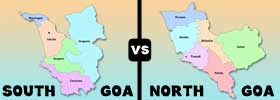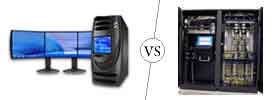Difference between Determiners and Pronouns
Key difference: A determiner precedes a noun or a noun phrase by introducing it to the reader/listener. A pronoun is a word that is used to substitute a noun in a sentence.
.jpg) A determiner, as suggested by the word itself, can be understood as a word that determines a noun or a noun phrase. A determiner precedes a noun in the sentence and is indicative of the scope of the noun. Determiners are basically used to indicate the nouns that are being referred to in a sentence. Determiners are of different types, such as:
A determiner, as suggested by the word itself, can be understood as a word that determines a noun or a noun phrase. A determiner precedes a noun in the sentence and is indicative of the scope of the noun. Determiners are basically used to indicate the nouns that are being referred to in a sentence. Determiners are of different types, such as:
- Articles: Articles double up as determiners in a sentence when placed before a noun or a noun phrase. The article ‘the’ is called as a definite article as it points to a particular thing being mentioned in the sentence. Whereas, the articles ‘a’ and ‘an’ are called as indefinite articles as they can refer to a class of nouns being mentioned in the text.
- Demonstratives: Words like ‘this’ and ‘that’ feature in this category of the determiners. They are used to demonstrate an object being talked about in the sentence. Sometimes, such words play as the subject in a sentence. These words basically function as pointers.
- Possessive determiners: As suggested by the term, these words are used to show possession of an object, a person or a place. Words like my, mine, his, her, their, our, etc. feature as possessive determiners in the English language.
- Quantifiers: These words reveal the quantity of the noun being mentioned in the text. They quantify nouns through words like many, few, several, etc. Words like these are often associated with nouns that bear relevance to numbers.
.jpg) Pronouns are a very resourceful tool to easily construct sentences in the English language. Pronouns basically are the words which are used to denote a noun already mentioned in the text. Multiple use of the names of persons, places, etc. in a piece of text can make it cumbersome. Pronouns provide a sensible option to eliminate such discomfort by making the text crisp and free-flowing.
Pronouns are a very resourceful tool to easily construct sentences in the English language. Pronouns basically are the words which are used to denote a noun already mentioned in the text. Multiple use of the names of persons, places, etc. in a piece of text can make it cumbersome. Pronouns provide a sensible option to eliminate such discomfort by making the text crisp and free-flowing.
For example:
Christine was late, so she hurried to school.
In the sentence above, the word ‘Christine’ is the noun, which is mentioned in the first part of the sentence. Mentioning this word again in the second part of the sentence would have made it look awkward and perhaps, required the sentence to be divided into two separate sentences. Hence, to avoid such a crisis, the pronoun ‘she’ is used to make the sentence free-flowing and unobstructed.
Comparison between Determiners and Pronouns:
|
|
Determiners |
Pronouns |
|
Meaning |
A determiner precedes a noun or a noun phrase by introducing it to the reader/listener. |
A pronoun is a word that is used to substitute a noun in a sentence. |
|
Types |
Demonstrative, Possessive, Quantifier, etc. |
Personal, reflexive, relative, etc. |
|
Word examples |
This, that, my, his, a, an, many, few, etc. |
He, she, they, we, us, you, etc. |
|
Example of usage |
This book was read by Cheryl once, and she can’t stop reading it now. |
This book was read by Cheryl once, and she can’t stop reading it now. |
Image Courtesy: slideshare.net, blog.writeathome.com









Add new comment